What is LIMA?
At Crazy Daisy Dog Training, we believe that practicing strong ethics and protocols of LIMA build trust and establish leadership within the dog training industry. It also allows us to safely, humanely, and improve our dogs behavior while keeping focused on their mental health.
What is LIMA?
“LIMA” is an acronym for the phrase “least intrusive, minimally aversive”. LIMA describes a trainer or behavior consultant who uses the least intrusive, minimally aversive strategy out of a set of humane and effective tactics likely to succeed in achieving a training or behavior change objective with minimal risk of producing aversive side effects. LIMA adherence also requires consultants to be adequately educated and skilled in order to ensure that the least intrusive and aversive procedure is used.
LIMA does not justify the use of punishment in lieu of other effective interventions and strategies. In the vast majority of cases, desired behavior change can be affected by focusing on the animal’s environment, physical well-being, and operant and classical interventions such as differential reinforcement of an alternative behavior, desensitization, and counter-conditioning.
LIMA Is Competence-Based
LIMA requires trainers/consultants to work to increase the use of positive reinforcement and eliminate the use of punishment when working with animal and human clients. In order to ensure best practices, consultants should pursue and maintain competence in animal behavior consulting and training through continuing education, and hands-on experience. Trainers/consultants should not advise on problems outside the recognized boundaries of their competencies and experience.
Positive Reinforcement and Understanding the Learner
Positive reinforcement should be the first line of teaching, training, and behavior change program considered, and should be applied consistently. Positive reinforcement is associated with the lowest incidence of aggression, attention seeking, avoidance, and fear in learners. 3
Only the learner determines what may be reinforcing. It is crucial that the trainer/consultant understands and has the ability to appropriately apply this principle. This fact may mean that the trainer/consultant assesses any handling, petting, food, tool, and environment each time the learner experiences them. Personal bias must not determine the learner’s experience. The measure of each stimulus is whether the learner’s target behavior is strengthening or weakening, not the trainer/consultant’s intent or preference.
Systematic Problem Solving and Strategies
The trainer/consultant is responsible for ensuring learner success through a consistent, systematic approach that identifies a specific target behavior, the purpose of that behavior, and the consequences that maintain the behavior.
A variety of learning and behavior change strategies may come into play during a case. Ethical use of this variety always depends on the trainer/consultant’s ability to adequately problem solve and to understand the impact of each action on the learner, as well as sensitivity toward the learner’s experience.
Preventing Abuse
We seek to prevent the abuses and potential repercussions of inappropriate, poorly applied, and inhumane uses of punishment and of overly-restrictive management and confinement strategies. The potential effects of punishment can include aggression or counter-aggression; suppressed behavior (preventing the trainer/consultant from adequately reading the animal); increased anxiety and fear; physical harm; a negative association with the owner or handler; increased unwanted behavior; and, new, unwanted behaviors.
Choice and Control for the Learner
LIMA guidelines require that trainer/consultants always offer the learner as much control and choice as possible. Trainer/consultants must treat each individual of any species with respect and awareness of the learner’s individual nature, preferences, abilities, and needs.
What Do You Want the Animal to do?
We focus on reinforcing desired behaviors, and always ask the question, “What do you want the animal to do?” Relying on punishment in training does not answer this question, and therefore offers no acceptable behavior for the animal to learn to replace the unwanted behavior. These LIMA guidelines do not justify the use of aversive methods and tools including, but not limited to, the use of electronic, choke or prong collars in lieu of other effective positive reinforcement interventions and strategies.
When making training and behavior modification decisions, trainers/consultants should understand and follow the Humane Hierarchy of Behavior Change – Procedures for Humane and Effective Practices, 7 outlined in the diagram.
For these reasons, we, strongly support the humane and thoughtful application of LIMA protocols, and we applaud those individuals and organizations working with animals and humans within LIMA guidelines
Purpose
The Humane Hierarchy serves to guide professionals in their decision-making process during training and behavior modification. Additionally, it assists owners and animal care professionals in understanding the standard of care to be applied in determining training practices and methodologies and the order of implementation for applying those training practices and methodologies.
Hierarchy of Procedures for Humane and Effective Practice
Health, nutritional, and physical factors: Ensure that any indicators for possible medical, nutritional, or health factors are addressed by a licensed veterinarian. The consultant should also address potential factors in the physical environment.
Antecedents: Redesign setting events, change motivations, and add or remove discriminative stimuli (cues) for the problem behavior.
Positive Reinforcement: Employ approaches that contingently deliver a consequence to increase the probability that the desired behavior will occur.
Differential Reinforcement of Alternative Behavior: Reinforce an acceptable replacement behavior and remove the maintaining reinforcer for the problem behavior.
Negative Punishment, Negative Reinforcement, or Extinction (these are not listed in any order of preference):
a)Negative Punishment – Contingently withdraw a positive reinforcer to reduce the probability that the problem behavior will occur.
b)Negative Reinforcement – Contingently withdraw an aversive antecedent stimulus to increase the probability that the right behavior will occur.
c)Extinction – Permanently remove the maintaining reinforcer to suppress the behavior or reduce it to baseline levels.
6. Positive Punishment: Contingently deliver an aversive consequence to reduce the probability that the problem behavior will occur.

